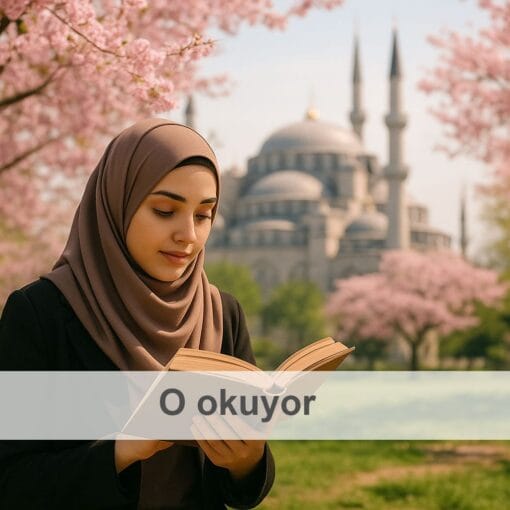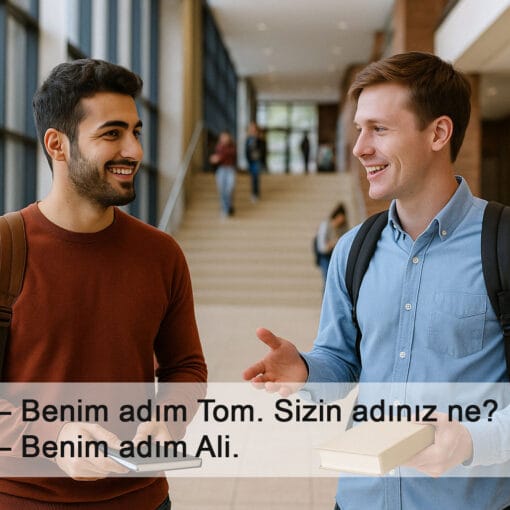In Turkish, demonstrative pronouns are used to point out specific people, objects, or places. The most common demonstrative pronouns are “bu” (this), “şu” (that – near the listener), and “o” (that – far from both speaker and listener). These words agree with the noun they refer to and are often followed by a noun or used alone when the noun is understood from context.
For example:
- Bu kalem. (This is a pen)
- Şu masa büyük. (That table is big)
- O ev çok güzel. (That house is very beautiful)
Bu – this (used for something or someone very close, within reach)
Burası – this place / here
Şu – that (used for something a bit farther away, but still visible or near the listener)
Şurası – that place / there
O – that (used for something far from both the speaker and the listener)
Orası – that place / over there (refers to something far away)
Usually, a noun referring to a person or object follows a demonstrative pronoun. For example:
Bu kitap. – This (is) book.
Şu ev. – That (is) house.
Listen and read
- Orası Amerika. – That is America.
- Burası ev. – This is a house.
- Şu kalem. – That is a pencil.
- Bu Hanım. – This is the lady.
If we are talking about inanimate objects, animals, or birds, we ask the question “Bu ne?” – “What is this?”
If we are talking about people, we ask “Bu kim?” – “Who is this?”
Bu ne? – What is this?
Şu ne? – What is that?
O ne? – What is that (over there)?
Bu kim? – Who is this?
Şu kim? – Who is that?
O kim? – Who is that (over there)?
With the pronouns Burası, Şurası, and Orası, the interrogative word Neresi? is used.
The question “Where is this?” or “What is this place?” will be expressed as:
Burası neresi? – What is this place? / Where is this?
Şurası neresi? – What is that place? / Where is that?
Orası neresi? – What is that (far away) place? / Where is that (over there)?
The choice depends on how close or far the object or place is.
Read the dialogue and listen to the audio
| Ali: Merhaba Hakan! | – Hello, Hakan! |
| Hakan: Merhaba Ali Bey! Nasılsınız? | – Hello, Mr. Ali. How are you? |
| Ali: İyiyim, sağ ol. Sen nasılsın? | – I’m fine, thanks. How are you? |
| Hakan: Ben de iyiyim, teşekkür ederim. | – I’m fine too, thank you. |
| Ali: Bu ne? | – What is this? |
| Hakan: Bu bizim fotoğraf. | – This is our photo. |
| Ali: Ne güzel! Burası neresi? | – How beautiful! What place is this? |
| Hakan: Burası İstanbul. Bu da benim evim. | – This is Istanbul. And this is my house. |
| Ali: Çok güzel bir ev. Ve orası neresi? O da İstanbul mu? | – It’s a very beautiful house. And where is that? Is that Istanbul too? |
| Hakan: Hayır, orası İstanbul değil, Antalya. | – No, that is not Istanbul, it’s Antalya. |

Yeni Kelimeler
Hah! – Ah! (an exclamation) Bu da… – And this is… Bir – One (this word is also used as an indefinite article in Turkish) Değil – Not (negation particle)
Lesson 1
- Alphabet
- New Vocabulary
- Introduction
- Demonstrative Pronouns
- Vowel and Consonant Harmony
- Yes/No Questions
- Exercises
- Dialogue “At the Bazaar”
Discover more from Turkish language
Subscribe to get the latest posts sent to your email.




